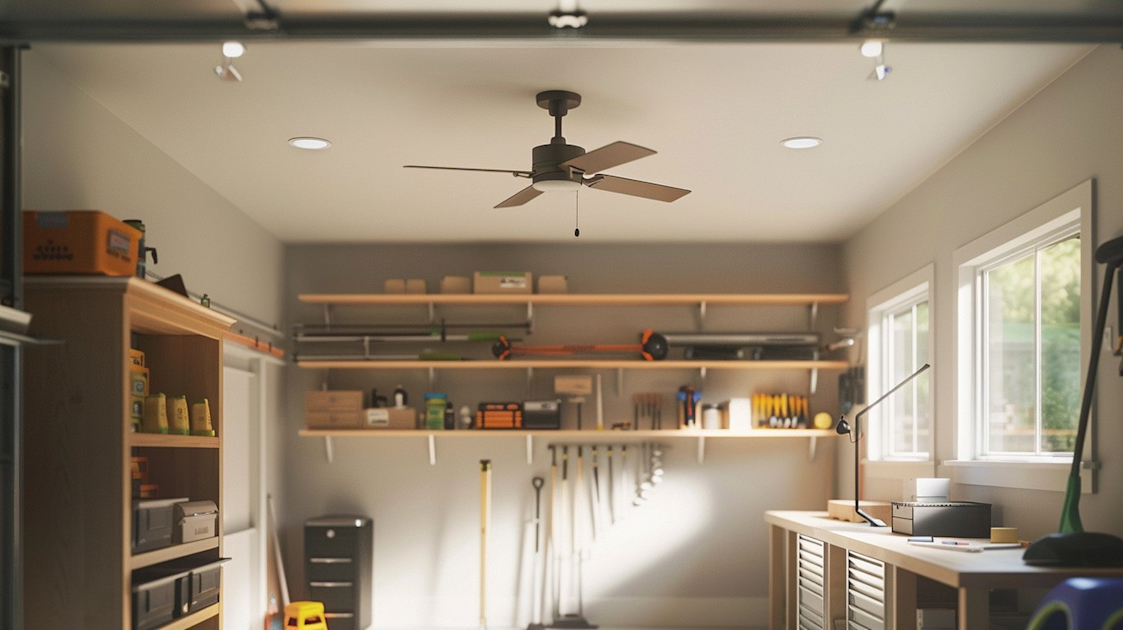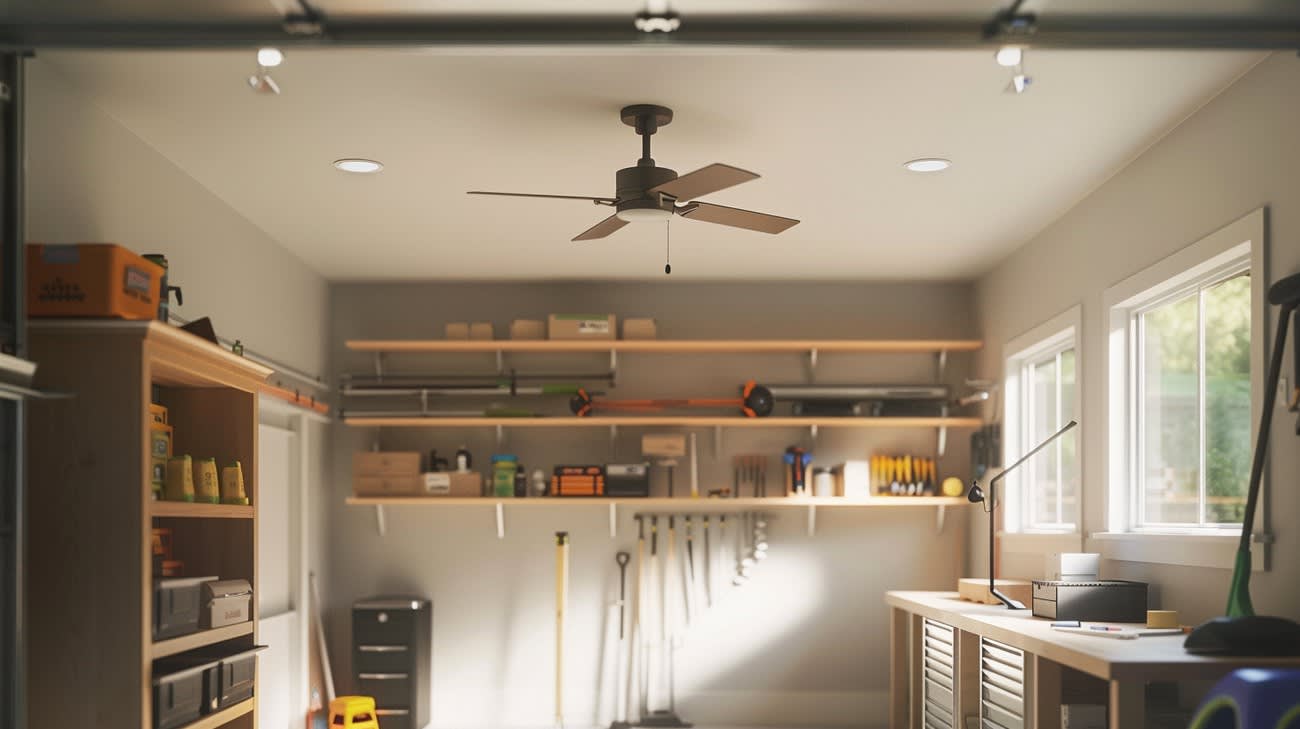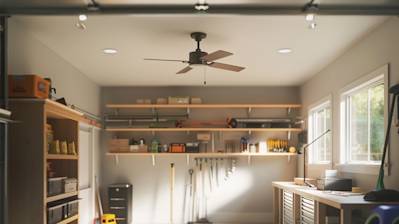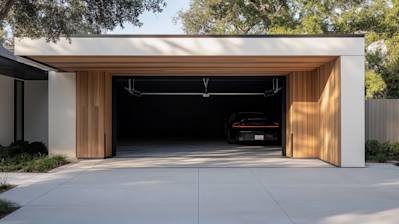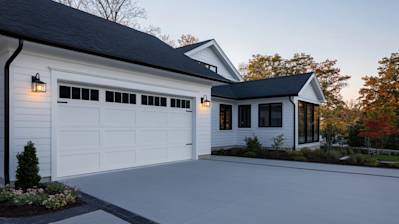Garage ceiling fans might not be the first thing you consider when upgrading your garage, but they can significantly impact the comfort and functionality of the space. Whether you use your garage as a workshop, a storage area, or a recreational space, this guide will help you understand everything there is to know about garage ceiling fans.
Why Choose a Ceiling Fan for Your Garage?
Choosing a ceiling fan for your garage isn't just about cooling; it's about creating a comfortable environment that can handle various tasks throughout the year. Here's why you should consider installing one:
- Temperature Regulation: Ceiling fans can maintain a consistent temperature, reducing the need for air conditioning.
- Air Circulation: They enhance airflow, which is especially important in a garage where fumes or odors may accumulate.
- Energy Efficiency: Proper air movement helps lower energy consumption by reducing the reliance on AC units.
- Versatility: Many fans come with lighting fixtures, improving the overall functionality of the garage.
Selecting the Right Garage Ceiling Fan
Consider the Garage Size
Before purchasing a ceiling fan, assess the size of your garage. This will help you determine the fan size needed to effectively circulate air.
- Small Garages (Up to 150 sq ft): Opt for fans with a blade span of 29 to 36 inches.
- Medium Garages (150 to 300 sq ft): Choose fans with a blade span of 36 to 42 inches.
- Large Garages (300 sq ft and above): Look for fans with a blade span of 52 inches or larger.
Assess the Ceiling Height
The height of your garage ceiling will dictate the type of mount required:
- Low Ceilings: A flush mount or low-profile fan is optimal to save space.
- Standard Ceilings: Use a standard downrod mount.
- High Ceilings: Consider a long downrod to ensure the fan hangs at the optimal height for airflow.
Explore Different Features
Modern garage ceiling fans come with a variety of features enhancing comfort and convenience:
- Reversible Motor: This feature allows the fan to circulate warm air during the winter.
- Remote Controls or Smart Integration: Offers ease of use and can integrate with home systems like Alexa or Google Home.
- Integrated Lighting: Adds illumination, which is crucial in a multi-purpose space like a garage.
- Weather Resistance: Choose damp-rated fans if your garage is not fully enclosed or experiences high humidity.
Installing Your Garage Ceiling Fan
Tools and Materials Needed
Before you begin, gather the necessary tools and materials:
- Ladder
- Screwdrivers
- Wire stripper
- Voltage tester
- Mounting brackets
- Screws and bolts
Installation Steps
- Safety First: Turn off electricity to the garage from the circuit breaker to ensure safety.
- Mount the Bracket: Secure the fan’s mounting bracket to the ceiling stud.
- Assemble the Fan: Attach the blades and lighting fixtures as per the manufacturer's instructions.
- Electrical Connections: Connect the wires from the fan to those from the ceiling, matching colors.
- Secure the Fan: Hang the fan on the mount, locking it firmly in place.
- Test the Fan: Restore power and test the fan for balance and functionality.
Maintaining Your Garage Ceiling Fan
Regular maintenance ensures your garage ceiling fan operates efficiently and safely. Here are some maintenance tips:
- Dusting and Cleaning: Regularly dust the blades to prevent accumulation of dirt which can unbalance the fan.
- Check for Wear: Inspect the blades and the motor for any signs of wear or damage.
- Tighten Screws: Make sure all screws and connections are snug to prevent wobbles or noise.
- Seasonal Motor Reversal: Switch fan direction based on the season to optimize heating and cooling.
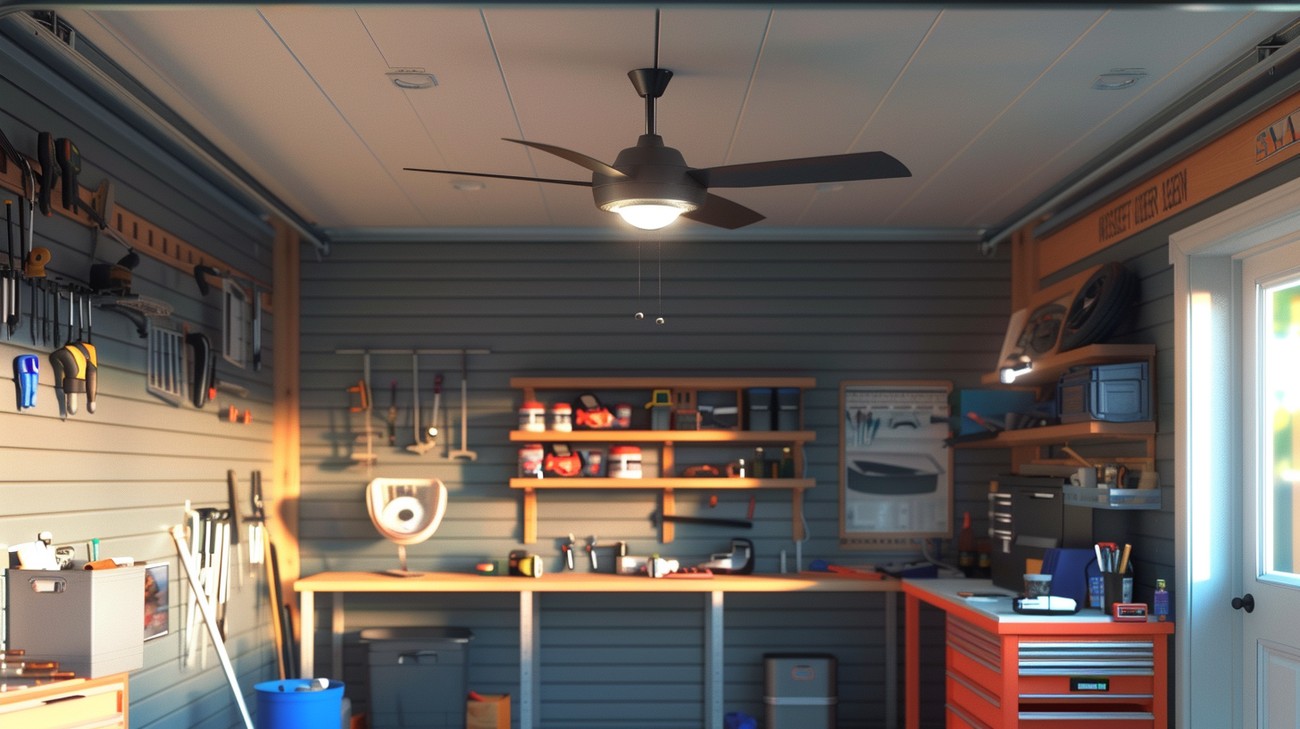
Garage Ceiling Fan FAQ
Why would I need a garage ceiling fan?
Installing a garage ceiling fan is an excellent way to improve air circulation and regulate temperature in your garage. Whether you use your garage for parking, as a workshop, or for storage, a ceiling fan can help keep it cool in the summer and redistribute warm air during colder months. This can contribute to energy savings and a more comfortable environment, protecting both your belongings and enhancing your work experience in the garage.
How do I choose the right size garage ceiling fan?
Selecting the appropriate garage ceiling fan size involves considering the dimensions of your space. Measure your garage to determine its square footage. For smaller garages up to 225 sq. ft., a fan with a blade span of 36 to 42 inches might be sufficient. Larger garages may require fans with 52 to 60 inches blades. The larger the fan, the more air it circulates, ensuring efficient coverage and better temperature regulation.
What features should I consider when selecting a garage ceiling fan?
When choosing a garage ceiling fan, look for features such as multiple fan speeds, a reverse motor function for seasonal changes, and a remote control or wall switch for convenience. Consider durable materials that can withstand the garage environment, such as damp-rated or wet-rated fans if your garage is particularly humid or not fully enclosed. Energy efficiency is also critical; opting for fans with Energy Star ratings can save you money in the long run.
Can I install a garage ceiling fan by myself, or should I hire a professional?
Installing a garage ceiling fan can be a DIY project if you are comfortable with basic electrical work. Ensure you follow the manufacturer's instructions carefully and adhere to all safety guidelines. However, if you lack experience with electrical installations or if the fan requires new wiring or mounting adjustments, it may be wise to hire a professional electrician to ensure a safe and secure installation.
Are there specific types of garage ceiling fans for outdoor garages?
Yes, if your garage is open or partially exposed to the elements, you should opt for outdoor-rated garage ceiling fans. These fans are designed to withstand moisture and varying temperatures, with damp-rated fans suitable for humid environments and wet-rated fans capable of handling direct exposure to rain. Always check the fan's rating to ensure it matches your garage conditions.
How does a garage ceiling fan help with ventilation?
A garage ceiling fan enhances ventilation by promoting constant air movement, reducing the buildup of heat and potential fumes from vehicles or DIY projects. This circulation helps expel stale air and brings in fresh air, improving indoor air quality. Fans can't provide fresh air directly, but they significantly aid in pushing out the old, allowing the garage to ventilate more effectively through doors or windows.
What is the maintenance required for a garage ceiling fan?
Maintaining your garage ceiling fan involves regular cleaning to remove dust and debris from the blades, which can affect its performance and lifespan. Periodically check and tighten any loose screws or connections. Depending on the model, you may also need to lubricate moving parts as specified by the manufacturer. Regular checks for wear and tear ensure efficient operation and longevity of your garage ceiling fan.
Can I use a garage ceiling fan in conjunction with other heating or cooling systems?
Absolutely, a garage ceiling fan can be an efficient complement to other heating and cooling systems. During summer, the fan can work alongside air conditioners to create a wind-chill effect, allowing you to set your thermostat a bit higher. In winter, reversing the fan's direction helps circulate warm air trapped near the ceiling without directly cooling the space, aiding in uniform heat distribution and enhancing the effectiveness of your heating system.

Exploring the Pros and Cons of a Garage Ceiling Fan
Pros
Improved Air Circulation
One of the most immediate benefits of a garage ceiling fan is its ability to improve air circulation. Garages can often become stuffy, particularly during the warmer months. By enhancing airflow, a ceiling fan helps keep the space more comfortable, potentially reducing the need for additional cooling systems.
Temperature Regulation
Since garages are typically not as well insulated as the rest of the house, they can get unbearably hot or cold. A ceiling fan helps to distribute heat evenly, making it a handy tool during both summer and winter. During the hot season, the fan pushes warm air down and mixes it with cooler air. In contrast, a reverse setting in winter can help draw warm air that collects near the ceiling back into the room.
Energy Efficiency
Ceiling fans are considerably more energy-efficient compared to air conditioning units. They use less electricity and can reduce energy consumption by allowing you to rely less on air conditioning. Over time, this can result in lower utility bills, saving you money while you're working on your cars or hobbies.
Increased Comfort for Projects
Whether you’re a weekend warrior or love to spend hours building furniture, a ceiling fan can make your garage a much more pleasant place to work. The circulating air can help reduce perspiration and fatigue, making it easier to focus on detailed projects or extensive renovations.
Reduced Humidity and Moisture
For those living in humid areas, ceiling fans can help reduce the moisture levels inside your garage. This can be particularly important if you're storing items susceptible to humidity, helping protect tools, materials, or even a prized vehicle from moisture damage over time.
Aesthetic and Functional Lighting
Many ceiling fans come equipped with built-in lighting, which can serve as a dual-purpose feature. This can be incredibly advantageous if your garage lighting is minimal, enhancing visibility and turning the garage into a more usable workspace both day and night.
Cons
Installation Challenges
Installing a ceiling fan in a garage isn't always straightforward. You might encounter challenges with mounting due to garage door tracks or existing electrical wiring setup. Plus, you'll likely need to secure the fan to a ceiling joist to ensure it's safely installed, which could require some DIY skills or professional help.
Height Restrictions
Ceilings in a garage can sometimes be lower than those in the rest of the house, raising potential clearance issues. A low-hanging fan may become an obstruction, especially if you store large items overhead or have a tall vehicle that requires frequent garage access.
Dust Accumulation
Garages are typically more prone to dust and dirt compared to other home areas. A ceiling fan can inadvertently circulate dust particles, potentially exacerbating allergies or requiring more frequent cleaning of both the fan blades and the garage itself.
Limited Temperature Control
While a ceiling fan can enhance comfort and air circulation, it doesn’t actively cool the air. In extremely hot climates, the fan might not suffice on its own without additional cooling systems like portable air conditioning units or high-efficiency ventilation.
Potential Noise
Depending on the model and quality of the installation, ceiling fans can sometimes generate noise that could be bothersome. If you're using the garage as a workspace where concentration is essential, a noisy fan might disrupt your workflow or peace of mind.
Cost Considerations
Although ceiling fans are usually cost-effective in the long run, the upfront costs of purchasing and installing the unit can be significant. This is especially true if professional installation is required due to complex wiring or structural changes in the garage ceiling.

Final Thoughts
A garage ceiling fan is an excellent investment that can elevate both comfort and functionality in your garage space. Not only does it help keep the area cool during those hot summer months, but it also improves air circulation throughout the year, making your garage work as a more pleasant extension of your home.
If you're considering adding a garage ceiling fan to your home, we're here to help. At 1A Garage Doors, serving homeowners in Sacramento, CA, we can help you choose the right fan to fit your specific needs and offer professional installation. Don’t hesitate to reach out to us for a consultation or to request a free estimate. We’re committed to enhancing your garage experience with expert advice and services tailored just for you.

